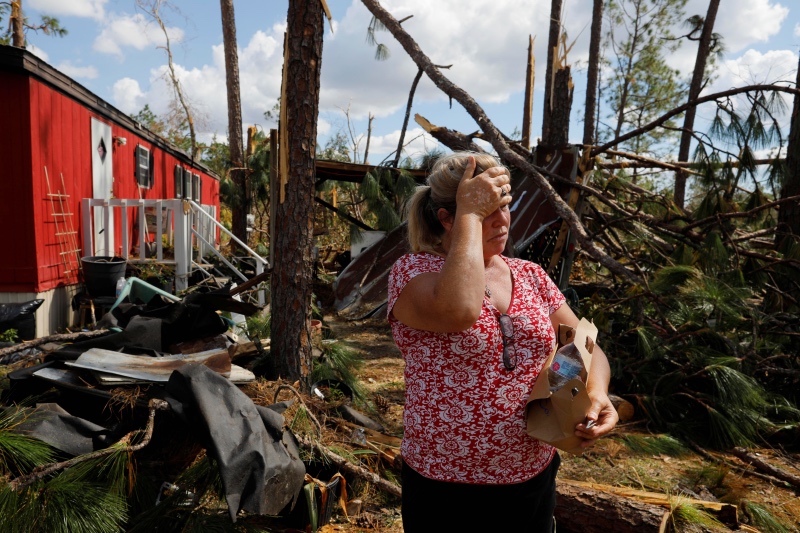New York City, US
Thomson Reuters Foundation
Virtual reality simulations work better than traditional alerts in motivating people to evacuate ahead of hurricanes, researchers said last week, part of efforts to improve alert methods as the risk of extreme weather increases.
Typically utilising headsets for viewers to look into, dramatic simulations can create a heightened sense of urgency and fear, said the study by researchers at Hofstra University in New York.

Hurricane Michael survivor Yvette Beasley stands in her front yard during a wellbeing check by a 50 Star Search and Rescue team in Fountain, Florida, US, on 17th October, 2018. PICTURE: REUTERS/Brian Snyder
With warming oceans and rising sea levels predicted to intensify hurricanes and other extreme weather, researchers have been seeking better ways to warn people to get out of harm’s way.
Participants who saw virtual reality of a storm were significantly more likely to say they would make home preparations or evacuate than those who saw traditional weather maps or text alerts, the Hofstra research found.
“Many people are just frightened by it because it’s like being trapped and slowly thinking you’re going to drown,” said Jase Bernhardt, lead author and a professor of geology, environment and sustainability at Hofstra.
“It elicits a visceral reaction which then makes them say, ‘Yes, I would actually take these warnings seriously, now that I really see what it’s all about,'” he told the Thomson Reuters Foundation.
In the study, college students were told about a looming storm.
Some were shown traditional warnings, and others saw a virtual reality simulation of a hurricane, with 360-degree viewing of rising water and flying debris and surround sound of roaring wind.
Nearly 90 per cent of those who watched the simulation said they would evacuate but only about 70 per cent who saw traditional media said the same.
“The VR experience can create the sense of fear and make people think about what they actually would do,” said one respondent quoted in the report, published in the Bulletin of the American Meteorological Society.
A number of factors keep people from evacuating, including illness, age and a fear that shelters will not help them, said the report.
Virtual reality technology is becoming more available to individual users, and outreach programs with schools and communities can bring it to a wider audience, said Bernhardt.





